

5 Steps to Obtain an Emotional Support Animal Letter for Apartment
by Lena Park
Last updated: July 28, 2025
Verified and Approved by:
Angela Morris,
MSW, LCSW
Fact Checked

Overview
Navigating the process of obtaining an emotional support animal letter for your apartment can feel overwhelming, especially when you’re already facing emotional challenges. It’s important to first assess your eligibility by identifying your mental health condition.
Consulting with a licensed mental health professional is a crucial step, as they can help you document your needs in a way that resonates with your unique situation. This article provides a structured approach that emphasizes the importance of consulting qualified experts and preparing for appointments.
By ensuring that your letter meets legal standards, you empower yourself to advocate for your rights under housing laws. Remember, you are not alone in this journey; support is available, and taking these steps can lead to a more comforting and understanding living environment.
Introduction
Navigating the complexities of securing an Emotional Support Animal (ESA) letter can feel overwhelming, particularly for those facing mental health challenges. With nearly 18% of pet owners in the U.S. depending on ESAs for support, it is vital to understand this process for those seeking companionship and comfort.
This guide aims to illuminate the essential steps to obtain an ESA letter for apartment living, empowering individuals to advocate for their needs. But what happens when landlords are unaware of the rights associated with these documents? How can one ensure compliance to avoid potential pitfalls?
Reflecting on these questions can help you feel more prepared and supported in your journey.
Assess Your Eligibility for an ESA Letter
To determine your eligibility for an Emotional Support Animal (ESA) letter, it’s important to follow these essential steps that can help you navigate this emotional journey:
-
Identify Your Mental Health Condition: Many individuals face mental health challenges, such as anxiety, depression, and PTSD. Reflecting on your mental well-being history and current struggles is crucial. It’s worth noting that approximately 18% of pet owners in the U.S. have ESAs, often as a response to these conditions. This statistic highlights the commonality of anxiety and depression, underscoring the importance of emotional support in our lives.
-
Consult Reliable Resources: Seeking information from reputable websites or mental health professionals can provide clarity on the criteria for ESA eligibility. Familiarizing yourself with the Fair Housing Act and the Air Carrier Access Act will empower you with knowledge about your rights concerning emotional support animals in housing and travel situations.
-
Self-Assessment: If you have access to a self-assessment quiz, consider taking it to better understand your need for an ESA based on your emotional state and daily functioning. This can offer valuable insights into how an ESA might enhance your well-being.
-
Document Your Condition: Keeping records of any previous diagnoses, therapy sessions, or medications that support your need for an ESA is vital. This documentation will be instrumental during the application process, strengthening your case and showcasing your journey.
-
Consider Your Living Situation: It’s essential to evaluate whether your current housing situation has any restrictions on pets. Understanding these limitations is key when seeking an emotional support animal letter for apartment, as having the proper paperwork can help you advocate for your rights under the Fair Housing Act. Remember, Wellness Wag offers a swift turnaround for obtaining your ESA document within 24 hours after approval, with flexible payment options starting at $32.25, making this process accessible for you.
As you embark on this journey, know that support is available, and you are not alone in seeking the companionship that an ESA can provide.
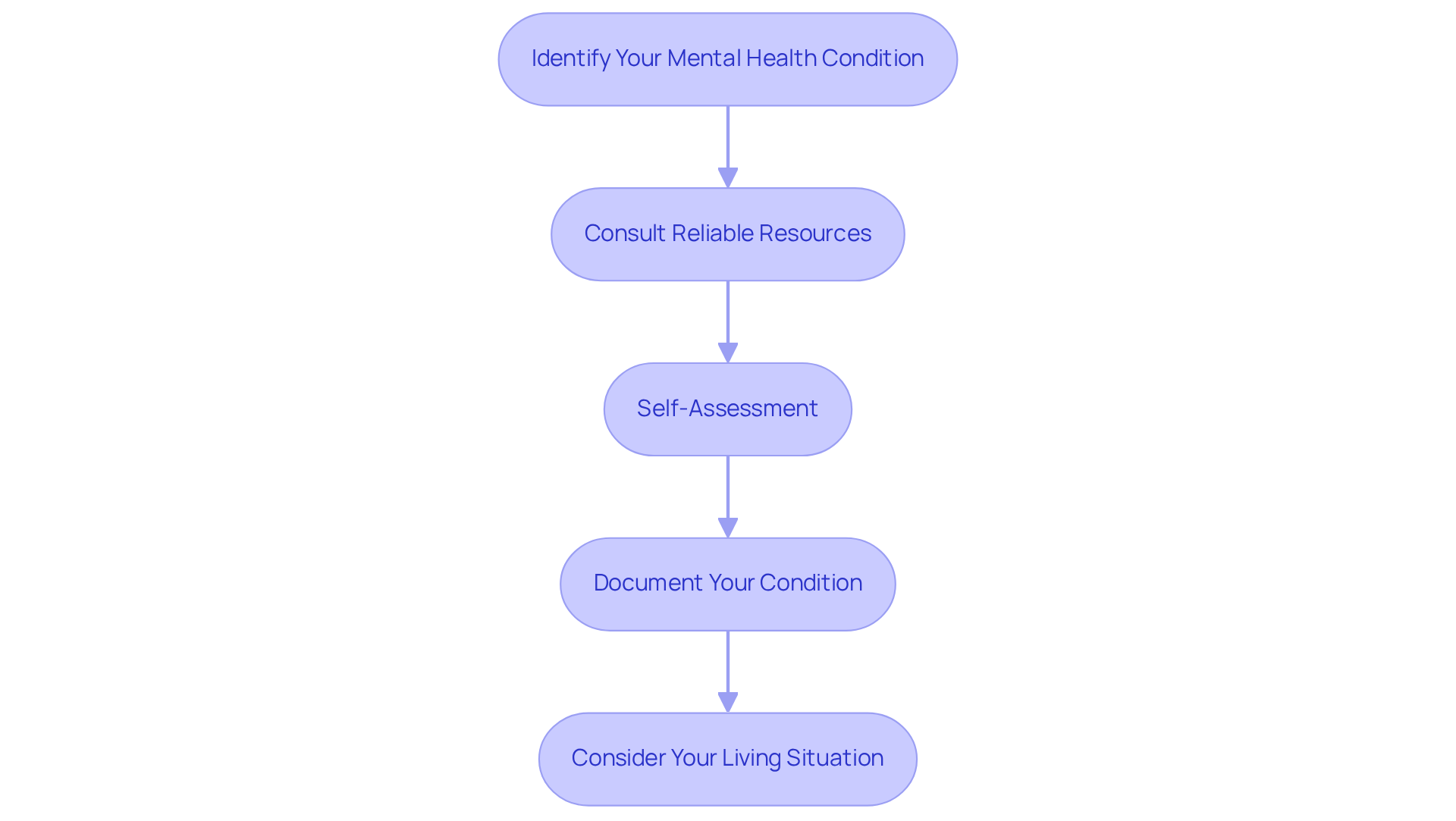
Consult with a Licensed Mental Health Professional
Navigating the process of consulting with a licensed mental health professional for an emotional support animal letter for an apartment can feel overwhelming. However, by following these essential steps, you can find the support you need.
-
Find a Qualified Professional: Start by seeking licensed therapists, psychologists, or psychiatrists who specialize in emotional support animals. Resources like Wellness Wag can help you connect with qualified experts who understand your needs.
-
Schedule an Appointment: Once you’ve identified a professional, reach out to arrange an appointment. It’s important to clearly express your intention to discuss acquiring an ESA document during your consultation, as this sets the stage for a focused conversation.
-
Prepare for the Consultation: While you aren’t required to bring documentation, gathering relevant medical records and a list of symptoms can be beneficial. This preparation will assist the licensed mental health professional (LMHP) in understanding your needs. Be open about your mental health history and current challenges, as well as how an ESA could provide the support you seek. Honesty is crucial for an accurate assessment, especially considering that the typical approval duration for an ESA document can take approximately six weeks, according to a 2023 survey by the Emotional Support Pet Association.
-
Discuss Your Needs: During your appointment, take the time to articulate your situation and explain why you believe an ESA would be beneficial for you. The expert will evaluate your condition and determine your eligibility for an ESA. Remember, the key criterion for an emotional support pet is its ability to provide comfort and support to someone with a diagnosed psychological or emotional disorder.
-
Ask for the ESA Document: If the expert concludes that you are eligible, don’t hesitate to formally request the ESA document. Ensure that it includes all essential details, such as your diagnosis, the type of animal, and the expert’s contact information, including their license number and state of practice. If you have multiple animals, you can also obtain an ESA document for each, detailing how they contribute to your relief.
Consulting with a licensed mental wellness expert is a vital step, as they provide the necessary assessment to ensure that an ESA can effectively assist your emotional support needs. By preparing thoroughly and communicating clearly during the consultation, you greatly enhance your chances of obtaining the emotional support animal letter for an apartment that you need. Additionally, Wellness Wag offers a money-back guarantee, reflecting their commitment to your satisfaction and the legitimacy of their services. Rest assured, privacy and confidentiality are prioritized during consultations, adhering to HIPAA and other privacy regulations, creating a secure environment for discussing your mental well-being.
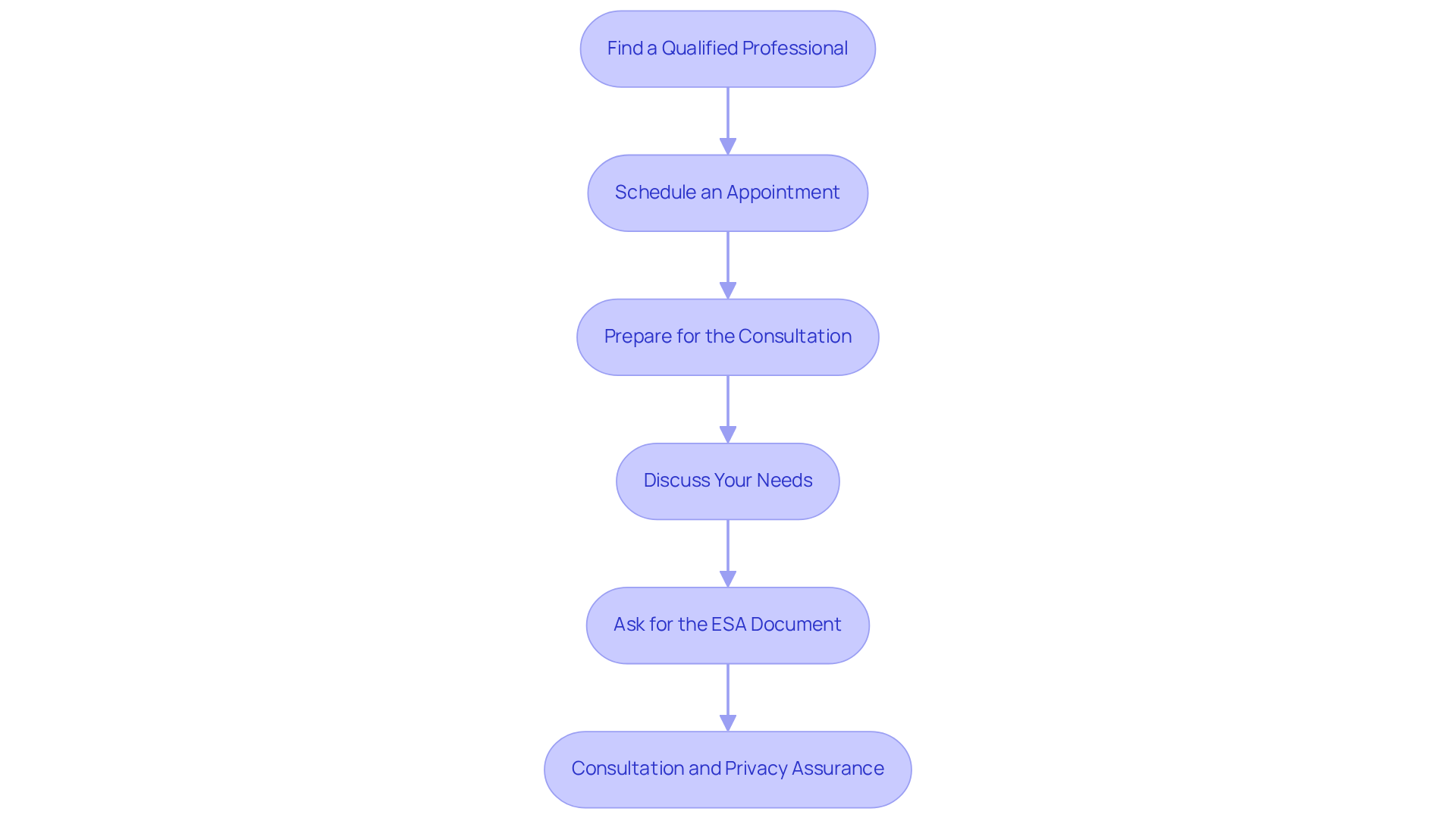
Receive and Review Your ESA Letter
Receiving your ESA letter can be a significant step towards enhancing your emotional well-being. To ensure its effectiveness, it’s important to follow these caring steps:
-
Check for Accuracy. Take a moment to confirm that your name, date of birth, and the information of your mental health expert are correct. This document is your official proof of needing an emotional support animal letter for apartment, and it should clearly express this necessity.
-
Verify Legal Compliance. It’s essential that the document meets legal standards. This includes being printed on the professional’s letterhead and containing their license number and signature. Unfortunately, around 30% of ESA documentation does not meet these compliance requirements, which can jeopardize your housing requests. Ensuring compliance is crucial for your peace of mind.
-
Understand the Document’s Purpose. Recognize that this emotional support animal letter for apartment serves as official proof of your need for an ESA, allowing you to seek reasonable accommodations from your landlord under regulations like New Jersey’s Law Against Discrimination. This law is designed to protect the rights of residents with disabilities, and knowing this can empower you.
-
Keep Copies. Make several duplicates of the document for your records and for submission to your landlord or housing provider. Having these documents readily available can make the accommodation process smoother and less stressful.
-
Consult with the Expert. If you have any questions or concerns regarding the document, please don’t hesitate to reach out to your mental health expert for clarification. Recent legal cases highlight the importance of confirming the validity of ESA documents, as courts are increasingly examining their authenticity. As legal expert Matthew J. Platkin notes, “Providing reasonable accommodations for people with disabilities is mandatory.” This underscores the importance of ensuring your documentation is in order.
By following these steps, you can ensure that your ESA document is both accurate and compliant with legal requirements, which significantly enhances your chances of securing the necessary accommodations. Remember, failing to comply with these requirements can lead to penalties of up to $10,000 for first-time violations and $50,000 for multiple violations within five years. You deserve the support you need, and taking these steps is a powerful move towards achieving that.
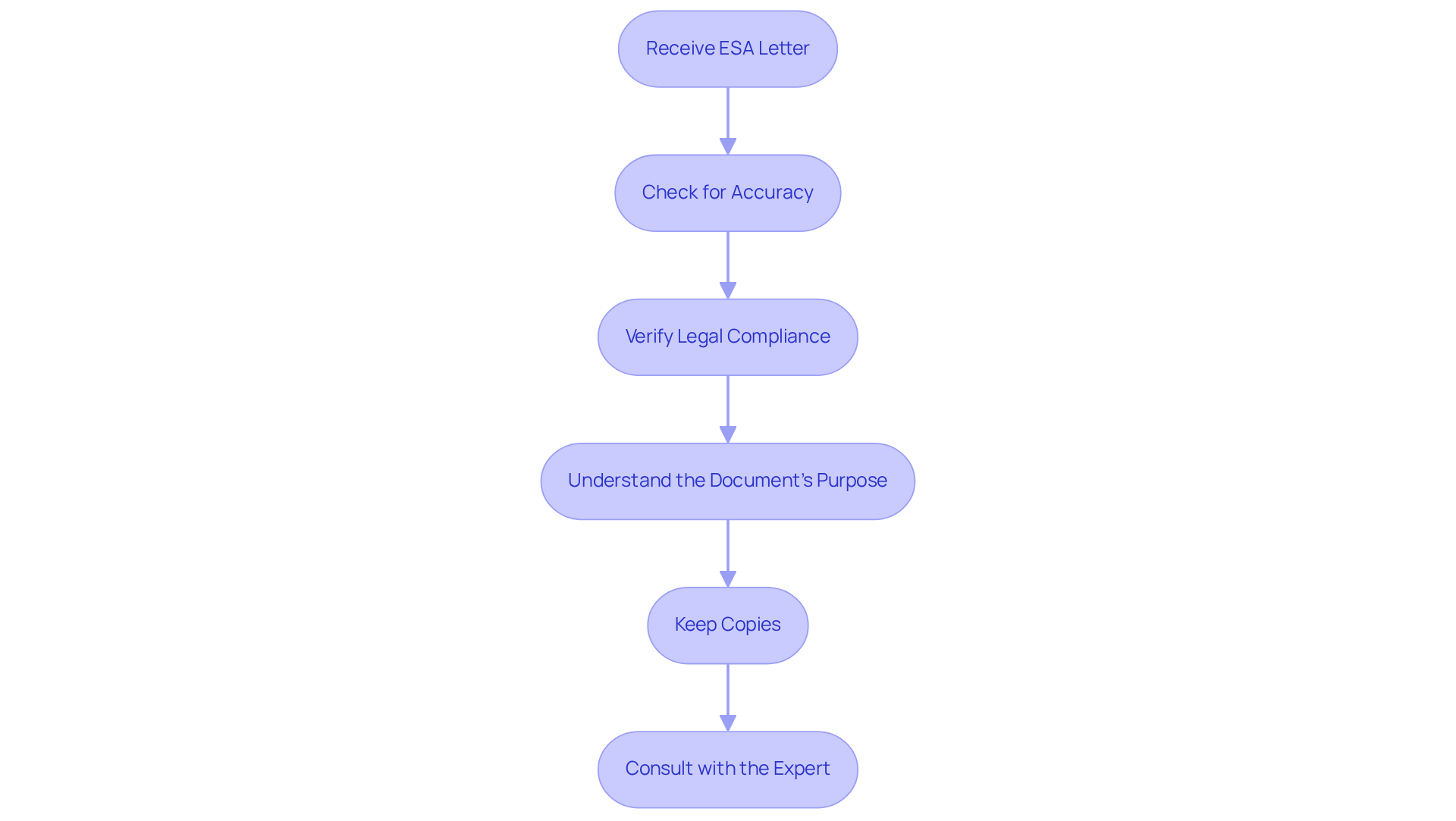
Utilize Your ESA Letter for Housing Accommodations
Navigating the process of utilizing your emotional support animal letter for apartment housing accommodations can feel overwhelming, but you are not alone. Here are some essential steps to help you along the way:
-
Begin by informing your landlord or property manager about your Emotional Support Animal (ESA). Present a copy of your ESA document and clearly explain your rights under the Fair Housing Act, which mandates reasonable accommodations for individuals with disabilities. This initial step is crucial in advocating for your needs, such as securing an emotional support animal letter for apartment.
-
Next, formally request any necessary accommodations, such as waiving pet fees or allowing your ESA in properties with pet restrictions. Documenting this request in writing will help maintain a clear record, ensuring that your rights are respected throughout the process.
-
It’s important to be prepared for questions. Landlords may seek clarification regarding your emotional support animal letter for apartment, so be prepared to discuss your situation and the benefits your ESA provides. Many landlords may not fully understand the role of ESAs in supporting mental well-being, and your insights can help bridge that gap.
-
Keep meticulous records of all communications with your landlord concerning your ESA. This documentation can be invaluable in case of disputes, providing evidence of your requests and their responses. Being organized will empower you as you navigate this journey.
-
Familiarize yourself with your rights as an owner of an emotional support animal letter for apartment. If your landlord refuses to accommodate your ESA without valid grounds, consider seeking legal advice or assistance from tenant rights organizations. Understanding your rights can empower you to advocate effectively for your needs, ensuring that you receive the support you deserve.
-
Statistics indicate that approximately 70% of pet owners do not know how to get their pet certified as an ESA or assume they don’t qualify. This highlights the importance of being well-prepared and informed. By following these steps, you can navigate the process more confidently and increase the likelihood of a positive outcome. Remember, you are deserving of support and understanding on this journey.
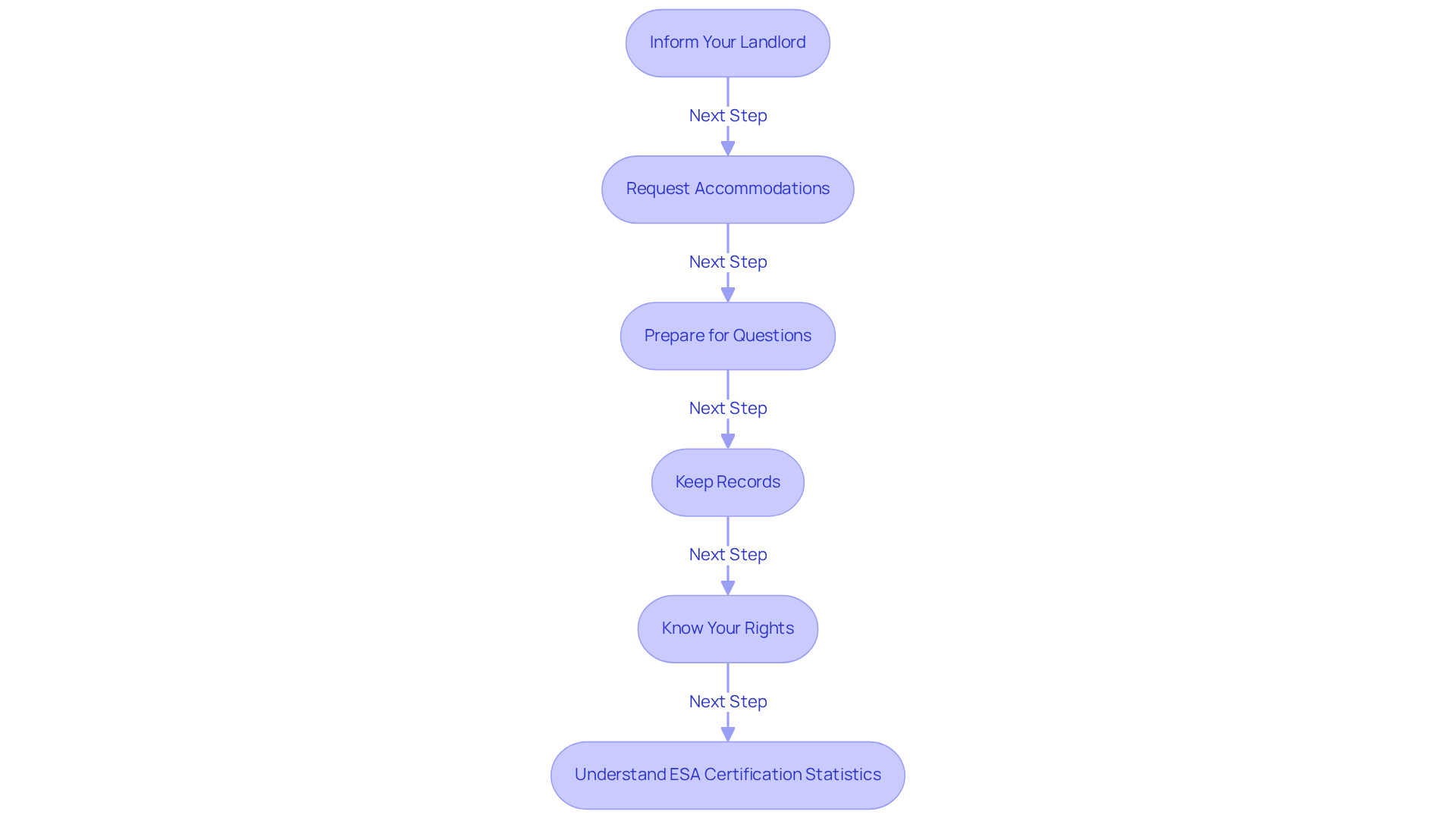
Consider Pet Insurance for Added Security
Considering pet insurance for your emotional support animal (ESA) can truly offer you peace of mind and financial security during challenging times. Let’s explore the steps that can guide you through this process with care and compassion:
-
Research Pet Insurance Options: Begin by identifying pet insurance providers that specifically cater to emotional support animals. Take your time to compare various coverage options, premiums, and customer feedback. This will help you find the best fit for your unique needs.
-
Evaluate Coverage Needs: Reflect on the type of coverage your ESA may require, based on their breed, age, and health history. It’s important to consider essential factors such as routine veterinary care, emergency treatments, and even potential behavioral therapy that could benefit your furry companion.
-
Get Quotes: Reach out to multiple insurance providers to request quotes. This will help you identify a plan that aligns with both your budget and coverage requirements. On average, dog insurance costs about $53 per month, while cat insurance averages around $32. However, keep in mind that dog insurance rates can vary significantly, ranging from $34 to $145 per month, depending on the breed and location.
-
Read the Fine Print: As you review the policy details, take a moment to thoroughly understand any exclusions and waiting periods. This ensures you know exactly what is covered. Most insurers typically reimburse 70%, 80%, or 90% of claims, which is a crucial detail to consider when selecting a plan that best supports your needs.
-
Enroll in a Plan: Once you’ve found a suitable insurance plan, complete the enrollment process with confidence. Keep your policy documents easily accessible for future reference, ensuring you’re prepared for any veterinary needs that may arise.
By following these steps, you can secure the right pet insurance for your ESA, helping to alleviate the financial stress often associated with veterinary care. Remember, you are not alone in this journey; support is available to help you navigate these important decisions.
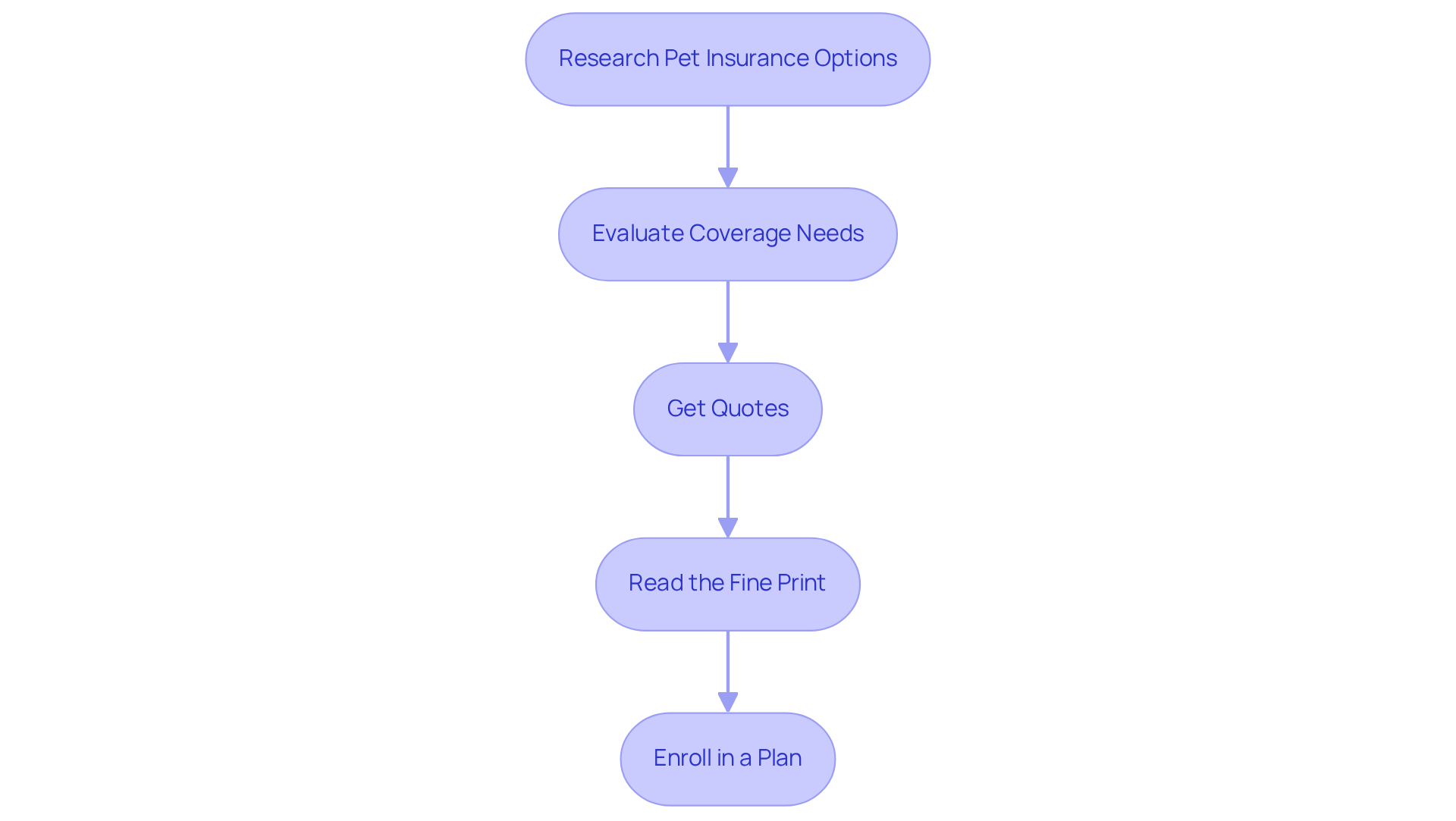
Conclusion
Obtaining an Emotional Support Animal (ESA) letter for apartment living is an important step for those seeking companionship and comfort during difficult times. This journey begins with understanding your eligibility, consulting with licensed mental health professionals, and ensuring that your ESA letter meets all legal requirements. By following these steps, you can advocate for your rights and access the emotional support you truly deserve.
This article outlines essential steps, such as:
- Assessing your eligibility for an ESA letter
- Consulting with a qualified mental health professional
- Reviewing the letter for accuracy and compliance
It highlights the significance of understanding housing laws and effectively communicating with landlords to secure the necessary accommodations. Additionally, considering pet insurance for your ESA can provide you with further peace of mind and financial security.
Ultimately, obtaining an ESA letter is not simply about paperwork; it’s about enhancing your mental well-being and fostering a supportive environment. You are encouraged to take these steps with confidence, knowing that help is available. Embracing the companionship of an emotional support animal can significantly improve your quality of life, making it vital to understand and exercise your rights in the pursuit of emotional wellness.
Frequently Asked Questions
What steps should I follow to assess my eligibility for an Emotional Support Animal (ESA) letter?
To assess your eligibility for an ESA letter, you should identify your mental health condition, consult reliable resources, conduct a self-assessment, document your condition, and consider your living situation.
How do I identify my mental health condition for an ESA letter?
Reflect on your mental well-being history and current struggles. Common conditions include anxiety, depression, and PTSD. Approximately 18% of pet owners in the U.S. have ESAs, often related to these issues.
What resources can I consult for ESA eligibility information?
Seek information from reputable websites or mental health professionals. Familiarizing yourself with the Fair Housing Act and the Air Carrier Access Act can also help you understand your rights regarding emotional support animals.
Is there a self-assessment tool available for determining ESA need?
Yes, if available, a self-assessment quiz can provide insights into your emotional state and daily functioning, helping you understand how an ESA might enhance your well-being.
Why is documenting my condition important for an ESA letter?
Keeping records of previous diagnoses, therapy sessions, or medications supports your need for an ESA and strengthens your case during the application process.
What should I consider about my living situation when applying for an ESA letter?
Evaluate any restrictions on pets in your current housing. Understanding these limitations is crucial for advocating your rights under the Fair Housing Act when seeking an ESA.
How can I find a qualified mental health professional for an ESA letter?
Look for licensed therapists, psychologists, or psychiatrists who specialize in emotional support animals. Resources like Wellness Wag can help connect you with qualified experts.
What should I do before my appointment with a mental health professional?
While not required, gathering relevant medical records and a list of symptoms can be beneficial. Be prepared to discuss your mental health history and how an ESA could help you.
What should I discuss during my consultation for an ESA letter?
Articulate your situation and explain why you believe an ESA would be beneficial. The professional will evaluate your condition and determine your eligibility based on your needs.
How do I request the ESA document after my consultation?
If deemed eligible, formally request the ESA document, ensuring it includes your diagnosis, the type of animal, and the expert’s contact information, including their license number.
What guarantees does Wellness Wag offer regarding the ESA letter process?
Wellness Wag offers a money-back guarantee, reflecting their commitment to customer satisfaction and the legitimacy of their services. They also prioritize privacy and confidentiality during consultations.
Certify Your Emotional Support Animal Today

Why You Can Rely on Us?
At Wellness Wag, we believe your pet deserves care rooted in both science and compassion. Each article is carefully researched, written in clear language for pet owners, and then reviewed by qualified professionals to ensure the information is evidence-based, current, and practical for real-life care. Our goal is to help you feel confident in making informed decisions about your pet’s health and well-being.
Reviewed by
Angela Morris, MSW, LCSW
Angela is a licensed clinical social worker with 20 years of experience in patient advocacy and community mental health. She has assisted numerous clients with ESA evaluations and brings a deep understanding of disability accommodations, ensuring that all information is accurate, supportive, and practical.

Written by :
Lena Park
Last Updated :
July 28, 2025












